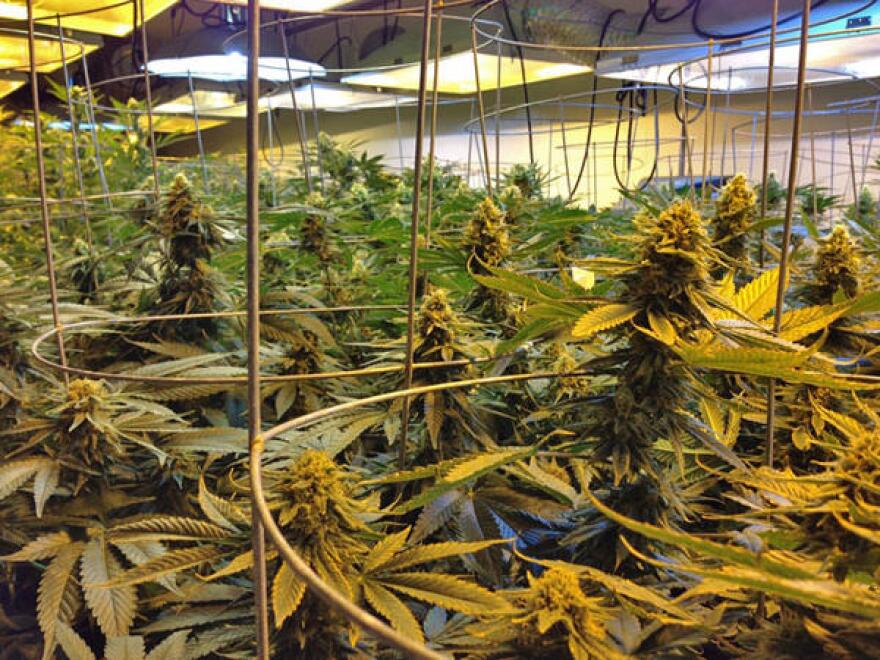Marijuana cultivation is estimated to use one percent of America’s electricity output. That’s enough juice to power 1.7 million average homes.
And as more states make the drug legal in some form, that power consumption is expected to soar. Northwest energy officials project cannabis grows will suck up three percent of the region’s power by 2035.
Now, efforts are underway to get growers to reduce their energy use.
John Kagia cuts right to the chase.
“Indoor cannabis cultivation is extraordinarily energy intensive," he flatly states.
Kagia is Director of Industry Analytics for New Frontier, a Washington DC-based cannabis industry consulting firm. For example, he says …
“For every kilo of marijuana produced, the energy footprint equates to 4.3 tonnes of carbon dioxide, and the equivalent of seven cross-country trips in a car that is getting 44 miles per gallon.”
Kagia recently authored a study that details the growing power consumption of cannabis grows and lays out the risks it poses, not only to the power grid and the environment, but to marijuana businesses themselves. Faced with a burgeoning legal marketplace, growers find themselves facing vigorous competition, leading to tighter profit margins.
“As the price of cannabis falls,” he says, “energy use becomes a growing part of their operational cost, and growers who are focused on energy efficiency are increasingly gaining a competitive advantage.”
Colt Hansen owns Grow City, a store in Medford that sells indoor growing equipment. He says the metal halide and high pressure sodium lights that have long been the favorites of indoor cannabis growers are starting to yield to fluorescents and other energy efficient technologies.
“In our store we’ve seen a large increase in T-5 lighting fixtures from what I’m used to,” he says. “And the LEDs we’re bringing in are selling out as fast as I can bring them in.”
Even so, Hansen says, many long-time growers tend to be set in their ways and are reluctant to change what’s been a winning formula.
“It’s like your grandma has that recipe for that perfect batch of cookies,” he says. “You don’t go changing that recipe at all. So most of these people have learned this rule of thumb for themselves, and veering away from that is just unheard-of.”
As a grower himself, Hansen says it’s more than just habit that makes many growers reluctant to embrace new lighting technologies.
“You gotta understand that these experiments cost these guys thousands of dollars in power and air conditioning and food and nutrients, and if it goes bad, it’s affecting either a patient’s medicine or their business.”
Adam Bartini, with the Energy Trust of Oregon, gets that concern.
“We can know with fairly good certainty whether a particular lighting fixture is going to save energy,” he says. “I guess the question is, how well is it going to grow cannabis, and how happy that particular grower is going to be with the product?”
The Energy Trust has been working for years with homeowners, businesses and industries to help them cut their energy use. And Bartini says the rapidly-expanding cannabis industry is showing interest in the Trust’s services.
“We’ve completed or have in our project pipeline about 23 projects at this point. Interest is definitely picking up.”
The Energy Trust offers free technical assistance to identify ways to reduce power use.
“We can have an energy efficiency engineer go out to the site. They scope out the different opportunities and we can produce a technical study for that customer,” he says.
The Trust can also offer cash incentives that can cover up to half the upfront capital cost of installing efficient lighting and other energy-saving equipment.
The New Frontier study says using more efficient lights is an improvement, but growing cannabis in greenhouses or outdoors using free sunlight is even better, reducing electricity costs by up to 90 percent.
Peter Gross, with the Green Valley Wellness dispensary in Talent, says he’s grown both indoors and outdoors. And while each has its pros and cons, given the ideal growing climate in southern Oregon and northern California, outdoors makes a lot of sense.
“You just get like much bigger plants, with much less energy consumption,” he says.
Among the recommendations offered by the New Frontier report are more research on new energy efficient lighting technologies, as well as changing rules in some jurisdictions that discourage or even ban outdoor grows.
If the cannabis industry is to thrive, it concludes, growers will have to make energy conservation a top priority.



